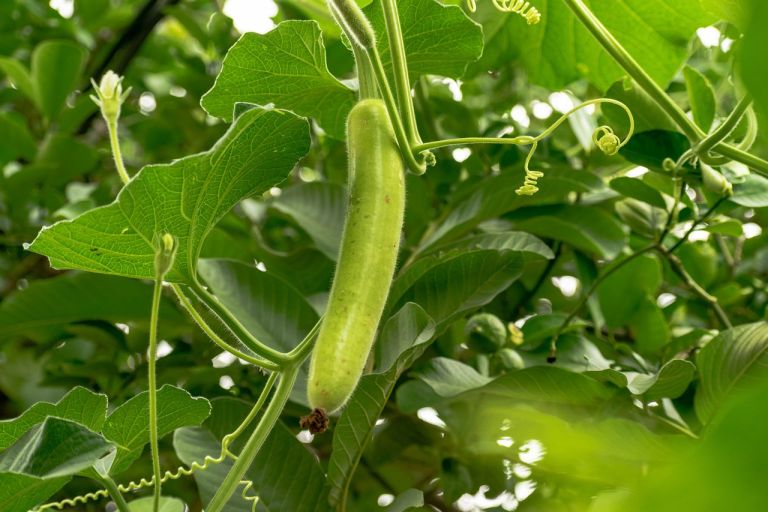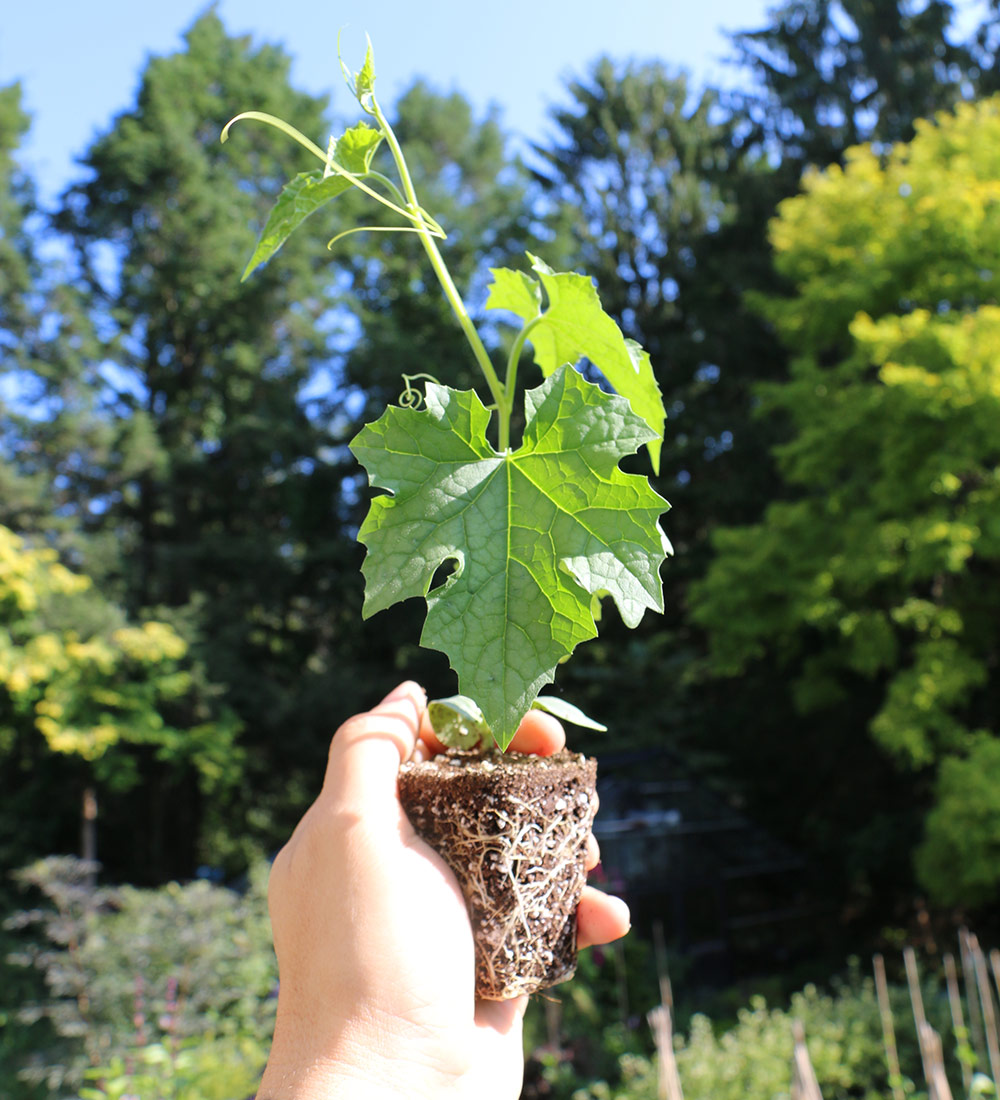
Initiating Bottle Gourd Cultivation
Bottle gourds need a lengthy growing season for fruit maturation and ripening. You can start them indoors for a head start. Fill a 9cm pot with peat-free multi-purpose compost and sow 2 to 3 seeds 2 to 3cm deep. Water the seeds, and keep the pot in a propagator at 18 to 21 °C or cover with cling film and position on a sunny windowsill. Ensure the soil stays moist but not wet, and remove the cover every few days to allow excess moisture to escape.
Nurturing the Seedlings
Within 1 to 2 weeks, the seeds should germinate. At this point, remove any cover and all but the strongest seedling. Continue to grow the bottle gourd seedlings, keeping the soil moist and in a well-lit spot but out of harsh direct sunlight. Once all risk of frost has passed and you have gradually hardened the plant off, you can plant your bottle gourd outside. Like other squash varieties, the bottle gourd prefers fertile and moisture-retentive soil. Enrich the soil by adding some garden compost or well-rotted manure to the planting site to encourage the bottle gourd’s vigorous growth.

Planting and Positioning
For the fruits to ripen, they require around 6 to 8 hours of sunlight per day and a sheltered position. A south-facing location or an unheated greenhouse is ideal. When planting bottle gourds, a spacing of 1m is advisable to give the plants enough room to grow. Dig a hole at least as deep as the root ball and twice as wide and plant it at the same depth it was previously planted. Backfill with soil, gently firming in as you go, and water thoroughly. To allow the bottle gourd’s fruits to hang and develop into their ornamental shape, lift the vines off the ground by tying them to a climbing aid like a pumpkin trellis.
Caring for Bottle Gourds
Calabash fruits require an ample supply of nutrients and water throughout the growing season. When watering calabash, keep the soil moist and water to the base of the plant to avoid wetting the foliage. Mulching bottle gourd plants will also help conserve moisture and keep any weeds at bay. As a hungry plant, you can apply a high-potassium fertilizer to your calabash plants to support their flowering and fruit production.
Harvesting Calabash
The bottle gourd harvest time for decorative and mature fruits is from September until October but before the first frost arrives. The calabash fruits are ready to harvest when the foliage has dried and withered, and the fruits sound hollow when tapped. To harvest a mature calabash gourd, cut it off the vine with a sharp knife, keeping around 5cm of stalk still attached.


